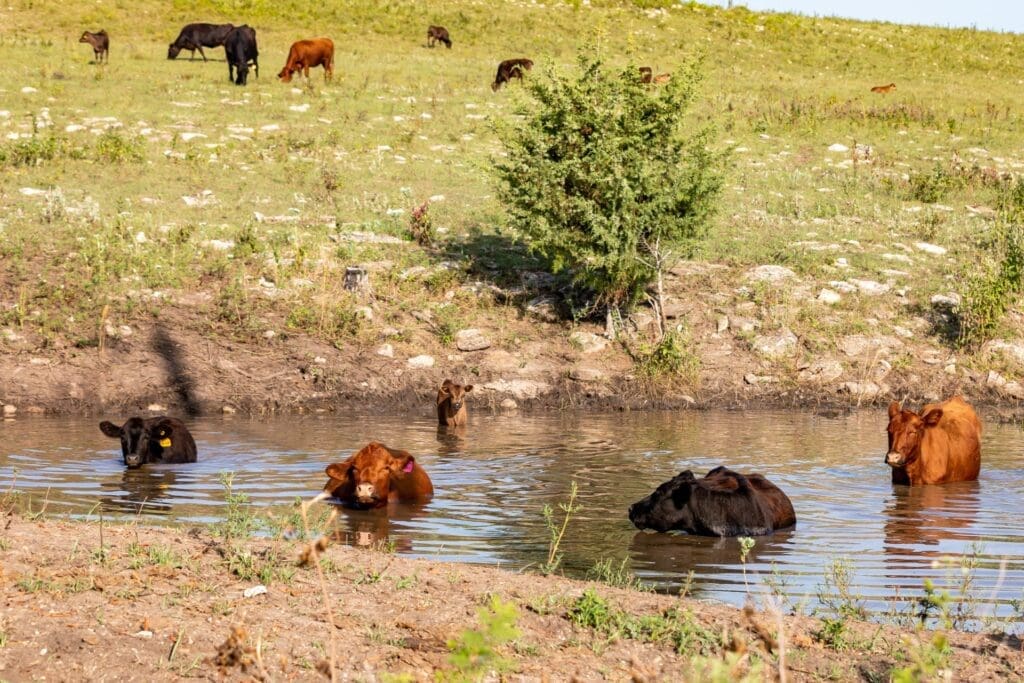By Trish Svoboda
Cattle experience heat stress as they lack the ability to cool themselves like humans do through sweating, according to A.J. Tarpoff, a beef extension veterinarian at Kansas State University. He explained heat stress coping behaviors are observed in cattle adapting to warmer temperatures. While humans sweat to maintain body temperature, cattle rely on increasing their respiratory rate, such as panting, to dissipate heat.
Signs of heat stress in cattle include increased standing, clustering near water sources, and seeking shaded areas. Tarpoff emphasized the importance of managing factors like temperature, humidity, wind speed, and solar radiation to optimize cattle comfort and productivity. He recommended simple strategies such as providing ample water and adjusting feeding times to mitigate heat stress effects.
Shade structures are often constructed by producers to help with heat relief. A recent study by K-State researchers examining the effects of shade on heat stress found that these structures are more than just a cooling solution, they are essential infrastructure. The two-year trial demonstrated additional benefits of investing in shades, including improved feed efficiency, increased growth rates, and higher average daily gains. The study also noted reduced panting rates and decreased water consumption needs by over a gallon per head per day.
In addition, Tarpoff said that lowering ground temperatures using bedding pens with straw and fence-line sprinklers can aid in keeping cattle cool.













